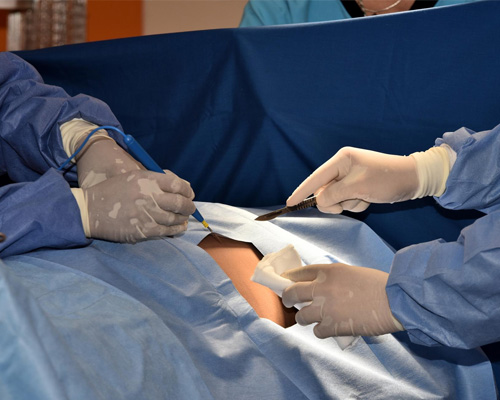
Minimally invasive cancer surgeries is one of the most innovative approaches to treat cancer. In fact, it is a safer and most importantly less painful alternative to surgeries. Here we are going to discuss all about the different types of minimally invasive cancer surgeries, the advantages of each treatment approach, and several considerations so patients can make informed decisions about their treatment options.
Minimally Invasive Cancer Surgery: Overview
Minimally invasive cancer surgery is done with a cut(s) or incision(s) of the skin measuring only a few centimeters or less; it does not use large cuts as seen in traditional surgery. Surgeons use robotic-assisted surgery or laparoscopes (thin hollow tubes with cameras attached) to visualize and carefully remove malignant tissue, causing significantly less trauma to the soft tissue, blood vessels, and nerves surrounding the tumor site.
Types of Minimally Invasive Cancer Surgeries
Many types of cancer and surgeries use minimally invasive techniques, such as:
- Laparoscopic surgery: Small cuts in the belly to get rid of tumors of the stomach, colon, pancreas, kidneys, or ovaries.
- Thoracoscopic surgery: Small cuts in the chest to get to tumors in the lungs, esophagus, and mediastinum.
- Robotic Surgery: It uses robotic arms to make the surgery more precise. It is most often used for prostate, gynecological, and head and neck cancers.
- Endoscopic Surgeries: It use natural openings in the body to get to malignancies with as little cuts as possible on the outside, like in cancers of the gastrointestinal tract or sinuses.
Key Benefits of Minimally Invasive Cancer Surgeries
- Less Scarring and Smaller Incisions: Smaller incisions mean fewer visible scars and better cosmetic results.
- Less Pain and Trauma: Cutting fewer muscles after surgery reduces pain and swelling, making the patient more comfortable.
- Less Blood Loss: Smaller wounds and more precise tools make surgery less bloody, which means fewer transfusions are needed.
- Less Likely to Have Problems: Smaller cuts indicate a lower risk of infections and other problems that might happen during surgery.
- Faster Recovery and Shorter Hospital Stay: Patients usually heal faster, which means they can leave the hospital sooner and get back to their normal lives.
- Better Surgical Accuracy: High-definition cameras and robotic help provide surgeons better vision and control, which helps them remove tumors more accurately and leave healthy tissues alone.
- Better Psychological Outcomes: Less pain, less scarring, and a faster recovery all lead to a better quality of life and emotional health after cancer treatment.
Who Can Benefit from Minimally Invasive Cancer Surgery?
These methods are best for those who have early-stage malignancies or whose overall health is good enough for surgery. Some patients who might benefit the most are:
- People who are obese, because standard surgery has a larger risk of wound complications.
- Older individuals, because faster recovery lowers the risk of things like blood clots and muscle weakness.
- Patients who want to spend as little time in the hospital as possible and get back to their normal lives as soon as possible.
But whether a patient is a good candidate depends on the type of cancer, the stage, the size of the tumor, and other anatomical factors. Some tumors that are complicated or advanced may still need standard open surgery to be completely removed.
Recent Advances in Minimally Invasive Oncology Surgery
The safety and effectiveness of these treatments have been significantly improved by the introduction of robotic surgical devices with 3D high-definition vision and better ergonomic design. Surgeons can do complicated resections with better control and less strain. Also, enhanced imaging integration makes it easier to remove malignant tissue exactly while keeping important structures intact.
Conclusion
Minimally invasive cancer operations are changing the field of oncology by giving patients treatment alternatives that are less painful, safer, and more accurate, with shorter recovery times and fewer complications. These new surgical methods give patients more confidence and a better quality of life when they have to deal with cancer therapy.
We use the newest minimally invasive oncology surgical techniques at Apex Multispecialty Hospital. We combine experienced surgical talent with cutting-edge technology to give each patient the best possible care and outcomes in cancer treatment.




